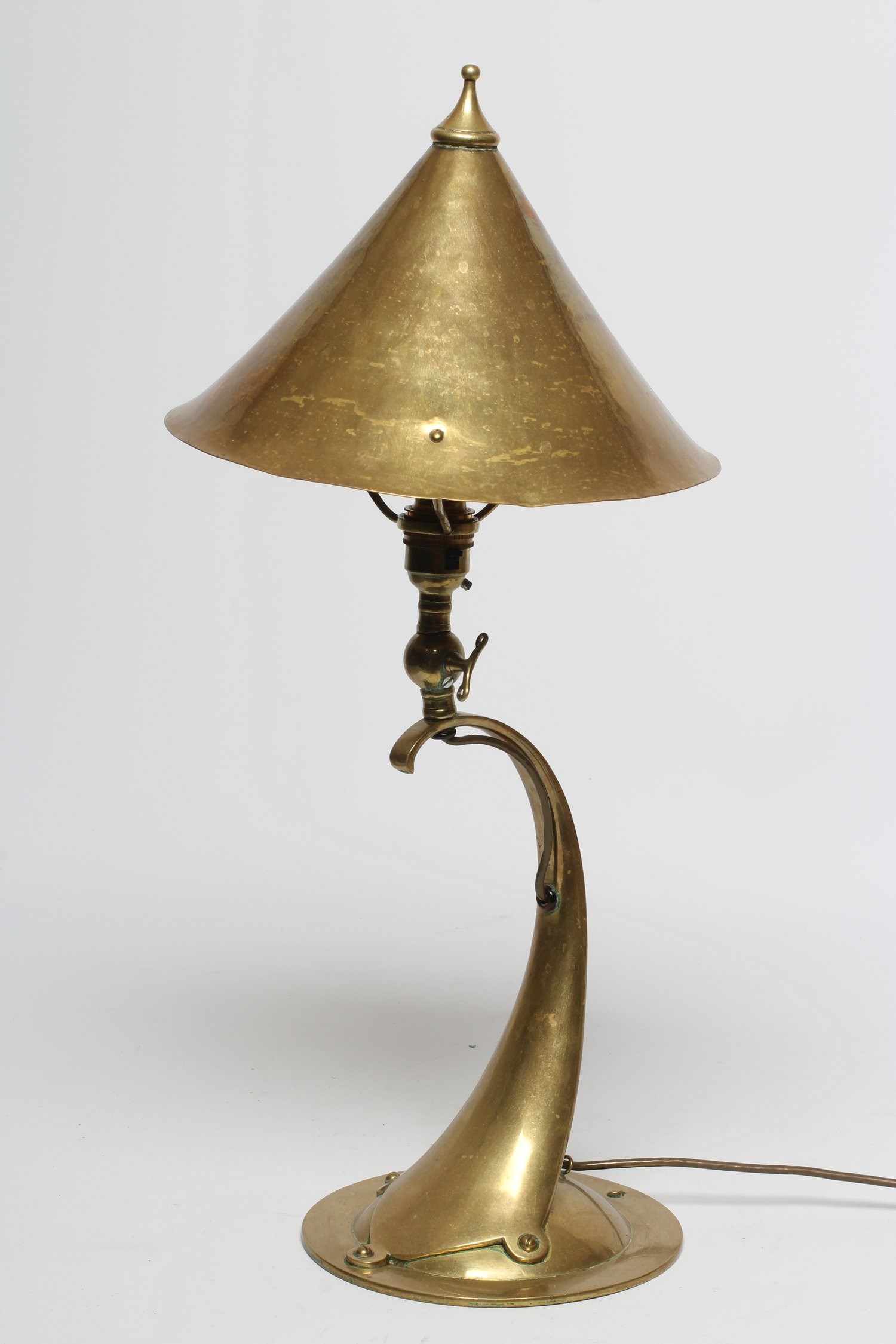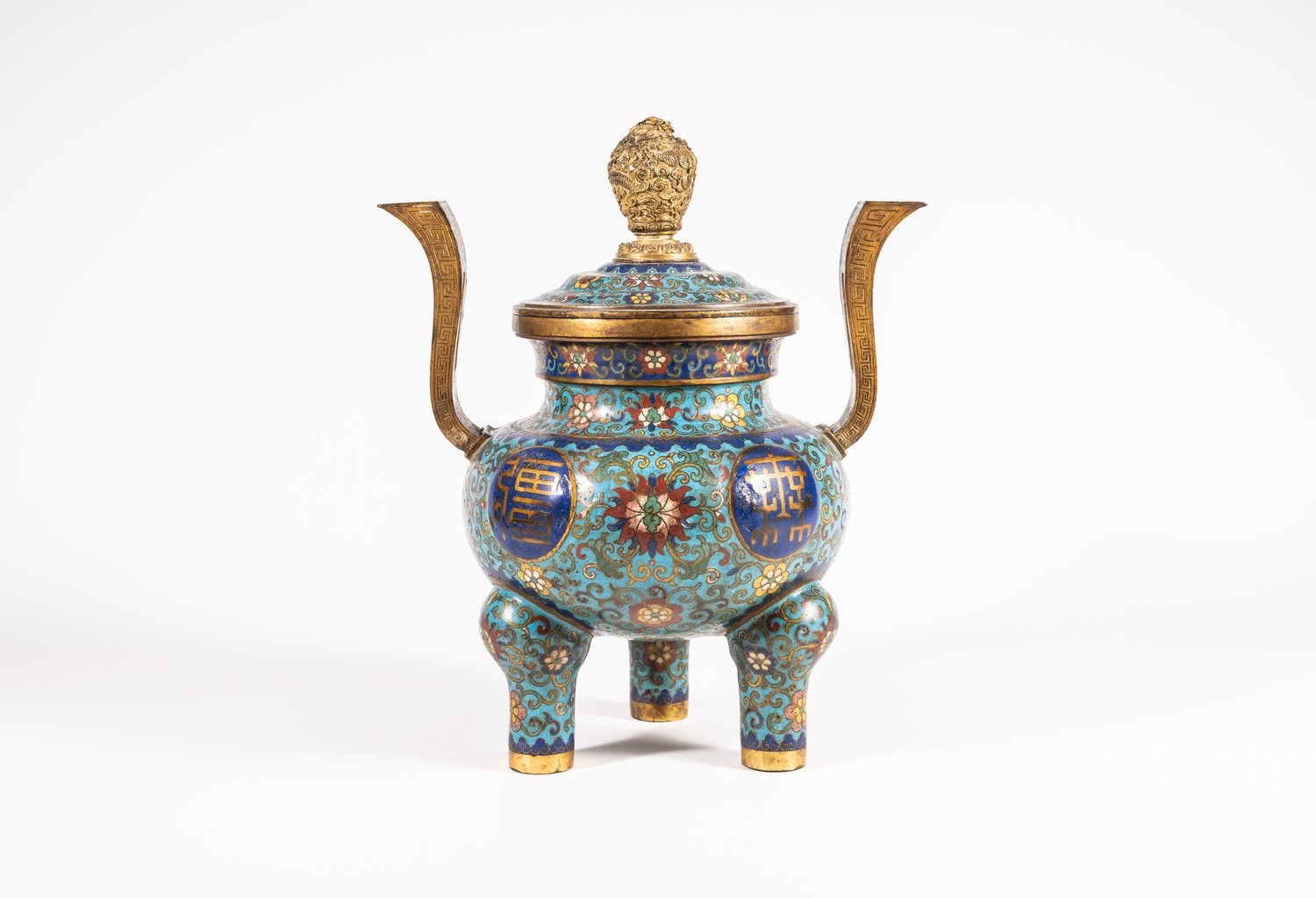Expectations vs. Reality
01 September 2022
ShareWhen auction estimates go out the window, it can be a big problem.
By Charles Hartley
Charles Hartley is the Director of Hartleys Auctions Ltd. and specialises in arms, militaria, fieldsports and taxidermy.

An Arts and Crafts style brass table lamp, early 20th century.
Sold by Hartleys Auctions for £3,600 after an estimate of £150-250.
A week ago, the editor of The Open Art Fair Magazine, came to me with a sad tale of an old man who undersold his table. It was a couple of years ago and the gent was flogging his furniture, having sold his stately. “Not to worry”, the guy said when the young Londoner who had been sent down to buy it turned up, “local chap at the auction house has told me what it’s worth so £6,000 will do fine”. The young buyer nearly fell over. He’d been all ready to part with £60,000 and the table sold some weeks later, for £120,000. The lad who’d been sent to buy it, apparently still loses sleep over the incident to this day. So what caused the colossal difference in estimate and sale price? Or to put it as the editor did, “what went wrong?”.
I must admit the idea that something had “gone wrong” made me chuckle, being an auctioneer, these are the occasions we dream of. Though like with everything, it is all about perspective. The hopeful purchaser always wants to pick up an item for a song, yet the auctioneer and owner will inevitably want everything to sail well beyond expectation. In any case, for an auctioneer whether selling at or above estimate, it is often a win-win; you are either proved correct, or shown to be an excellent salesman.
So, what can cause such a difference, is it a valuer outside of their comfort zone naively walking into the dark? I am not going to say this is not sometimes the case, no matter where you go the valuer is only ever human and simply cannot know everything. But with the resources we have at our fingertips, it is amazing what we can do and most auction houses, mine included, have great depth in experts who work behind the scenes aiding us in our endeavours. Though a specialist in arms & militaria, I am in the main a general valuer. Every day I am placed into houses across the country where there’s always the chance of a surprise. The true skill is knowing something is “special” through its unspoken quality, you then collect data, take necessary measurements and delve into your resources. But even with all the resources in the world, sometimes an item has no comparable, no expert and the valuer must pluck a figure from their gut, place it up for sale and hold on for dear life. Like police officers have a nose for crime, valuers must have a nose for the valuable. Let’s also not forget that a valuer can even get it right, but it only takes two people to want something enough, for a price to rocket and leave would-be competitors to comfort each other with the familiar “they’ve more money than sense”. Frankly, arts and antiques needs such people.
Back in March my colleague Gerard and I spotted an intriguing brass lamp dripping in arts & crafts style, though our initial hunch that it was by W.A.S. Benson was unfounded, we still felt it deserved a higher marketing push. With a “come-get-me” £150 – 250 estimate, we were thrilled when the gavel came to rest at £3,600. Not only did it find its way into the “dick of the day” column of the Antiques Trade Gazette, but they ran an article outing the designer as Arthur Dixon. But the true brilliance of this situation came when they ran a correction one month later, showing an opinion will only hold water until the next piece of evidence appears; in this case the discovery of a historic interiors catalogue for Jesson, Birkett & Co. But ultimately, we had performed our job in spotting the quality and doing the marketing necessary to do right by our vendor.
Within the same sale we also had a Chinese censer and cover, estimated at £2000 – 3000 that reached a thrilling £30,000. But when it comes to Chinese pieces, there is little judgement within the market, such results are commonplace as Chinese antiquities have boomed. Often with market movement, there is a lag as experts clamber to readjust and find their feet; after all valuing is often a game of quantitative market analysis. So, when markets shift, previous data can be misleading and with Chinese items the market never seems to adjust enough.

A Chinese cloisonné enamel tripod censer and cover.
Sold by Hartleys Auctions for £30,000 after an estimate of £2,000-3,000
A great example of this was seen at Bainbridges of Ruislip in 2010. Clearing a deceased estate their valuer discovered a fantastic Chinese Qianlong-era vase. Far from being a “sleeper”, the valuers saw star quality and much to the amazement of the family, placed it up sale at £800,000 - 1.2million. Yet 30 minutes after the opening bid, Peter Bainbridge brought his gavel crashing down to the sum of £43million! But this rostrum fairy tale was far from complete as over a year later the vase remained unpaid, with everything from simply a bad buyer to talk of Chinese government conspiracy being cited as reasons by the media, suggesting it to be a protest against the sale of historical treasures looted from China – this was of course never proved and the debt was eventually settled.
So, is a high price always a good thing? The sister who placed the vase with Bainbridges should have been over the moon, but soon found herself with a revised inheritance tax bill of over £17million, requested by HMRC before she saw a single penny from the vase. I dread to think the stress this must have caused her and I bet at times she wished it had never happened. Sadly, bad debtors and late payers, particularly when it comes to Chinese antiquities, have been commonplace in the trade. It is now normal to request large deposits on big ticket Chinese items prior to sale and you never count your chickens until they’ve hatched. I will admit that rather than being elated by our recent £30,000 censer, I was left feeling rather anxious. An item always has its best chance in the first sale and if a bad buyer leaves you high and dry, the rest of the market will wonder “what’s wrong with it?”; if unpaid, it will unlikely do as well again and rather than be happy with a price at or above the original estimate, the owner and I will only find ourselves counting the difference between the first and second result. Happily, I can confirm the sale was completed and the censer is currently on a boat back to China.
Though I pride myself on a strong sale record and rarely see an auction total not land between the cumulative estimates, there is always the chance of a record ahead. An auction is a wonderfully organic thing where so much of human nature can move a result and even in a time where technology has narrowed the chance of a shock, with a whole planet watching, a more common phenomenon in the ever more virtual post-covid age - there is still the possibility of a life changing moment.

